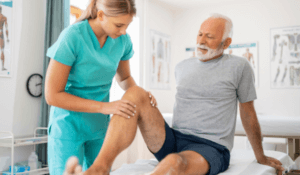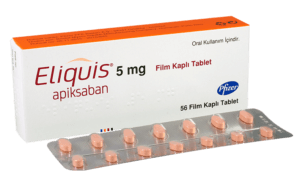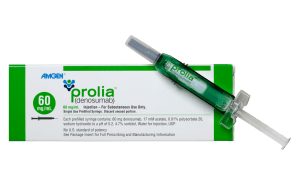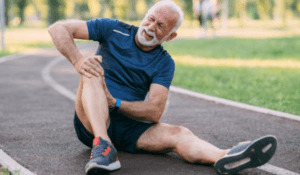 Knee pain is one of those unwelcome surprises life may throw at us, especially as we get older. Much like those mysterious body clicks and creaks that suddenly show up out of nowhere, one day, you’re running up the stairs two at a time, and the next, you’re wondering when your knees started sounding like a rusty old door hinge. Whether it creeps in gradually or strikes suddenly, knee pain is a common issue that can stem from injuries, overuse, or medical conditions like arthritis. And let’s face it, as we age, our bodies don’t bounce back the way they used to, making management of knee problems all the more important.
Knee pain is one of those unwelcome surprises life may throw at us, especially as we get older. Much like those mysterious body clicks and creaks that suddenly show up out of nowhere, one day, you’re running up the stairs two at a time, and the next, you’re wondering when your knees started sounding like a rusty old door hinge. Whether it creeps in gradually or strikes suddenly, knee pain is a common issue that can stem from injuries, overuse, or medical conditions like arthritis. And let’s face it, as we age, our bodies don’t bounce back the way they used to, making management of knee problems all the more important.
What causes knee pain?
Knee pain can have various causes, often linked to injuries. It may result from damage to the bones, ligaments, tendons, muscles, or cartilage in your knee. Another common cause is bursitis, which occurs when the fluid-filled sacs that cushion the knee become swollen.
Knee pain can often be caused by arthritis-related conditions such as osteoarthritis, rheumatoid arthritis, gout, or septic arthritis, which occurs when the knee joint becomes infected. Another common cause is patellofemoral pain syndrome, which refers to pain around the kneecap (patella) as it moves over the lower end of the thigh bone (femur). This condition is often linked to poor alignment of the kneecap.
Reasons why people experience knee pain:
Injuries
- Knee pain can happen suddenly from injuries like torn cartilage or a torn ligament (such as the anterior cruciate ligament (ACL injury) or MCL, a meniscus tear, or a broken bone. These types of injuries are usually serious and need quick medical care.
Overuse Injuries
- Repetitive movements can lead to injuries like patellar tendinitis, IT band syndrome, or bursitis. These conditions often cause pain and swelling.
Arthritis
- Arthritis, such as osteoarthritis, rheumatoid arthritis, or gout, can cause knee pain, swelling, and stiffness. It can affect people of all ages.
Mechanical Issues
- Problems like misaligned joints, a kneecap out of place, or issues with the feet or hips can strain the knees and lead to pain.
Degenerative Conditions
- As people get older, their joints can wear down, which may cause knee pain and make it harder to move around.
Inflammation
- Ongoing inflammation can cause constant pain, stiffness, and discomfort, making it harder for a person to go about their daily activities.
Ehlers-Danlos Syndrome (EDS)
- Ehlers-Danlos Syndrome is a group of conditions that affect the body’s connective tissues. People with EDS often have very flexible joints, stretchy skin, and fragile tissues. These symptoms can cause pain and make injuries more likely.
What are the symptoms of knee pain?
Symptoms of knee pain can vary depending on the location. Pain in the knee joint itself may radiate up or down the leg. Pain at the front of the knee is often linked to conditions like bursitis or arthritis. Pain along the sides of the knee is usually caused by injuries or arthritis. Pain behind the knee may be due to arthritis or the development of Baker’s cysts (a swelling that develops behind the knee due to a buildup of fluid. It’s also known as a popliteal cyst.)
People experiencing knee pain might also notice additional symptoms, such as swelling, redness, or warmth around the joint. Bruising near the knee, a sensation of the knee “giving out,” clicking or locking during movement, and difficulty fully straightening the leg are also common issues.
How is the cause of knee pain identified? 
The doctor will discuss the patient’s symptoms and perform a physical examination of the knee. They may also request additional tests, such as blood tests, imaging scans such as x-rays, ultrasounds, CT scans, or MRIs. In some cases, the doctor might perform a knee joint aspiration, which involves using a needle to remove a small sample of fluid from the area around the knee joint.
A doctor should be consulted if the knee cannot be moved, bears no weight, frequently locks or gives out, or causes significant pain. An emergency department visit is necessary if the knee is severely swollen or deformed, if there is a fever along with redness and warmth in the knee, or if the pain results from a serious knee injury.
How is knee pain treated?
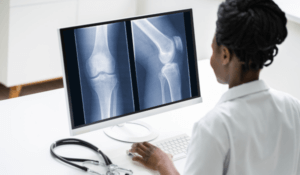
Additional ways to treat knee pain include using a brace or strapping to provide knee support, using ice packs for acute swelling, wearing foot orthotics to improve walking alignment, undergoing physiotherapy to strengthen and rehabilitate the knee, or considering knee surgery such as a knee replacement if other options aren’t effective.
Can knee pain be prevented?
Patients can sometimes prevent knee pain through certain exercises and losing any excess weight. Regular physical activity can reduce the risk of knee pain, and strength training exercises can build up the muscles that support the knee joint. To avoid knee problems, it is best to do exercises prescribed by a specialist that usually focus on making muscles stronger and more flexible. Using proper form is also really important when exercising to protect knees.
Tips to keep knees healthy as you age

Stay active
Joints are made to move, and regular exercise can help keep knees and other joints healthy. Physical therapy for knee arthritis can help keep the knees working well. It can ease pain and stiffness, make the muscles around the knees stronger, and help prevent weight gain that puts extra stress on the joints. It can also improve balance, lowering the risk of falls and injuries to the knees and other joints.
Maintain a healthy weight
Keeping a healthy weight reduces stress on the knees. Being overweight adds extra pressure that can wear down cartilage and cause pain. Studies show that even a small amount of weight loss can help people with knee osteoarthritis feel better, but losing more weight can make a bigger difference, especially for those who are obese. In one study, adults who lost 20% or more of their body weight had less pain and were able to walk further in a six-minute test compared to those who lost less than 5%, reducing the likelihood of needing joint replacement surgery.
The connection between weight and joint problems goes beyond just added pressure. Fat produces chemicals that lead to inflammation, which can harm the joints. This means that carrying too much weight is linked not only to osteoarthritis but also to other common types of arthritis involving inflammation, like rheumatoid arthritis, psoriatic arthritis, and gout. These conditions can all damage the joints over time.
Be gentle on your joints
To keep knees safe, stay away from activities with a lot of pounding, like jogging or high-impact aerobics. Sports that involve quick turning or contact, like basketball or football, can also be risky. If knees or other joints start to hurt, take a break and rest. If the pain is very bad, and the patient can’t move or put weight on the knee, or if the pain doesn’t get better after a few days, they should see a doctor.
Watch out for joint pain
If someone notices new or worsening pain in their joints, they should talk to a doctor. Pain could mean an injury or a flare-up of a condition that needs treatment to avoid more joint damage. Even regular knee pain from osteoarthritis can become a problem if it stops someone from staying active. That’s why it’s important to find ways to manage pain and to avoid joint replacement surgery.
Quit smoking and vaping
Smoking isn’t just bad for your lungs; it can also harm your joints. For years, studies have shown that smoking is linked to worse joint pain and damage in osteoarthritis and rheumatoid arthritis.
Eat a healthy diet
Eating a healthy diet can help protect your heart, prevent diseases, and keep your joints strong. A diet full of fruits, vegetables, fish, nuts, and beans while avoiding processed foods and unhealthy fats is incredibly beneficial. Research shows that following a Mediterranean diet might lower the chances of getting osteoarthritis. It can also reduce inflammation and slow down joint damage for those who already have osteoarthritis.
Maintain good posture
Poor posture can strain your joints over time, causing extra wear and tear on cartilage. Good posture helps muscles support joints more efficiently, reducing this stress. A physical therapist can teach exercises to improve posture, and they can also help set up workspaces to reduce joint stress while working. It’s best to also wear low-heeled or flat shoes. Look for shoes with good cushioning, flexibility at the ball of the foot, and plenty of support so they don’t bend in half. Shoes with a square or rounded toe are also better because they give toes room to move. If you have foot or knee pain, shoe inserts or orthotics might help. A physical therapist can recommend the best option for your needs.
Take care of your bones
Healthy joints depend on strong bones, so it’s essential to keep them in good shape. To strengthen bones, include plenty of calcium and vitamin D in the diet. Foods like tuna, salmon, egg yolks, and fortified milk or cereal are great sources. If it’s hard to get enough through food, talk to a doctor about taking supplements. It’s also a good idea to cut back on soda, coffee, and alcohol since these can cause the body to lose calcium.
Frequently Asked Questions
What is the most common reason for knee pain?
Knee arthritis is one of the most common causes of knee pain for people over the age of 50, usually as a result of wear and tear on the joints. In younger people, knee pain can be caused by overuse injuries.
How do I know if my knee pain is serious?
Experiencing symptoms like knee swelling, stiffness, deformity, pain while bearing weight, instability, or popping noises often signals an underlying injury such as ligament tears, meniscus damage, or even a fracture. These signs should not be ignored, as early evaluation can prevent further damage.
What can I do for knee pain?
To manage knee pain, rest the knee and elevate it to reduce swelling. Ice therapy is beneficial in the initial 48 hours, while heat helps with stiffness later. Over-the-counter pain relief, like ibuprofen, can ease discomfort. Engage in gentle stretching and strengthening exercises to improve flexibility and stability, and consider using knee braces for added support.
How do I know if knee pain is joint or muscle?
Muscle spasms frequently occur alongside muscle pain, but moving the affected area can sometimes help ease the discomfort by releasing built-up lactic acid or toxins. Generally, muscle pain improves when the muscle is at rest. On the other hand, joint pain often requires more time to heal and is commonly accompanied by swelling. Unlike muscle pain, joint pain tends to persist even when the affected joint is not in use, as the issue runs deeper than a typical muscle strain.
Is it better to rest or walk with knee pain?
For acute injuries and intense pain, rest is often needed. However, mild pain, stiffness, and chronic conditions like osteoarthritis may improve with light walking. Combining rest with suitable activity supports recovery and promotes better knee health.
What does arthritis in the knee feel like?
Arthritis can lead to knee pain, stiffness, and swelling, often making everyday tasks like walking or climbing stairs more challenging. Individuals with knee arthritis may experience various types of pain, including:
- Gradually worsening knee discomfort
- Pain that feels more intense in the morning or after periods of rest
- Discomfort in both knees
- Pain following intense physical activity
- Episodes of pain lasting several weeks.Joint pain that intensifies with weather changes

